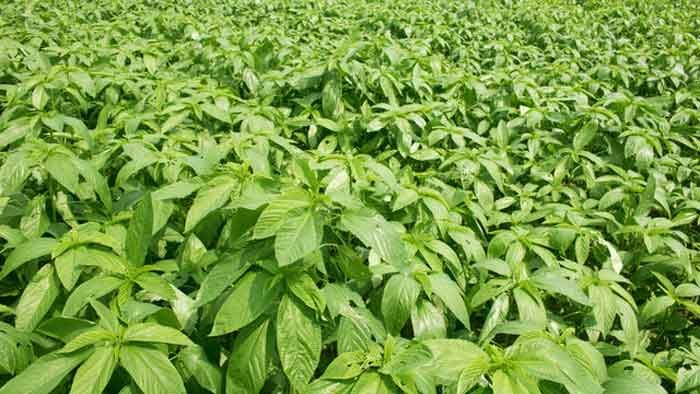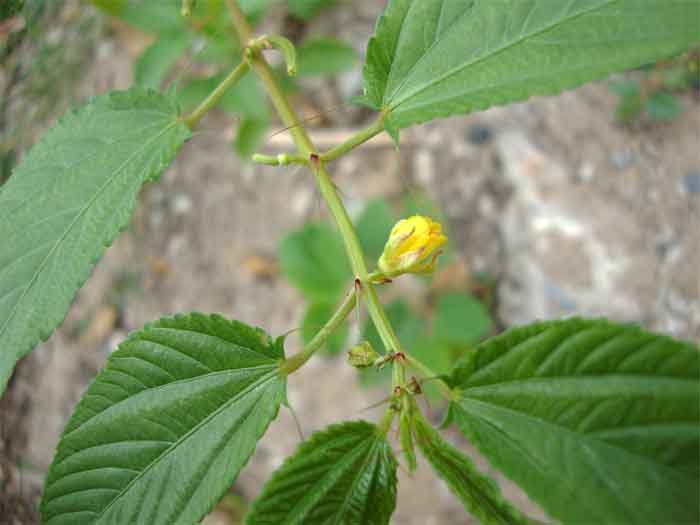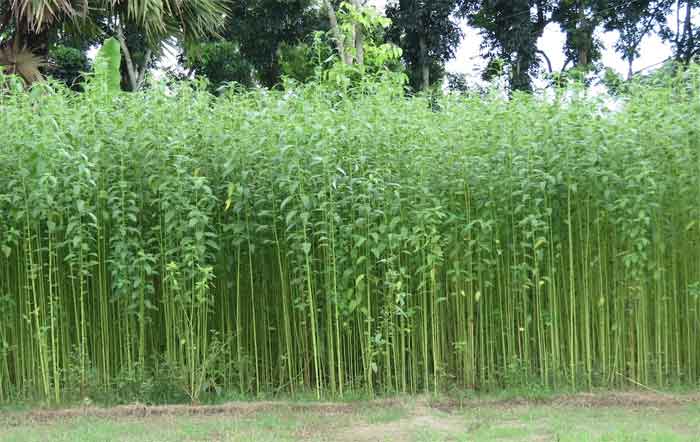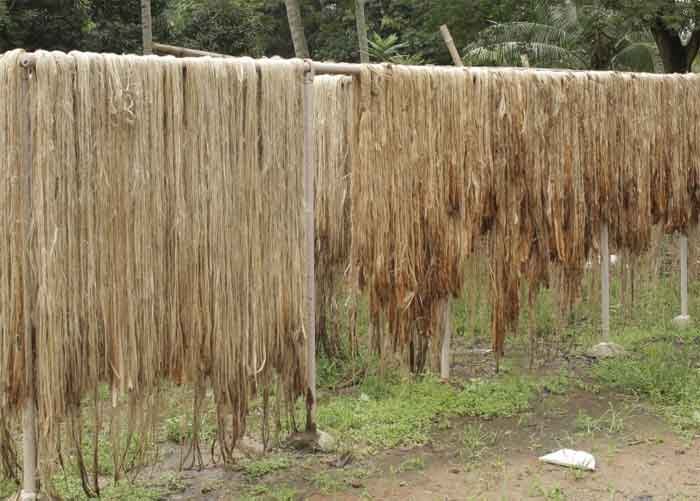Jute is created mostly from plants in the Corchorus genus, which was previously classified with the Tiliaceae family and currently with Malvaceae.
Burlap or hessian cloth is made from jute (or hemp), which is sometimes referred to as hemp.
It’s a natural fiber that doesn’t require any pesticides to produce or process. Jute is also 100 percent biodegradable.
When jute items disintegrate, they return vital minerals to the soil. Have a look at the facts about Jute Plant.
History of Jute Plant
The name “jute” is derived from the word juta, which is the Bengali name for the plant.
By the 19th century, jute had become an important crop in Bengal. The British East India Company began exporting jute products to Europe in the early 1800s. Jute became an important commodity in international trade by the mid-19th century.
Jute production boomed in the 20th century. The Bengal region became the world’s leading producer of jute. Jute cultivation and processing spread to other countries in Asia, Africa, and Latin America.
Jute plants are grown for their fiber. The fiber is used to make a variety of products, including burlap, hessian, and gunny cloth. Jute is also used as a soil erosion control measure. It is planted on slopes to prevent soil erosion and degradation.
Types of Jute Plant
There are two types of jute plants:
Corchorus Capsularis

and
Corchorus Olitorius.

C. capsularis is the better-known type of jute plant. It produces a higher quality fiber than C. olitorius. The other variety, C. olitorius, is grown primarily for its leaves, which are used as a vegetable in many parts of the world.
Cultivation of Jute Plant
Jute plants are grown in tropical and subtropical regions. The plants are typically cultivated on riverbanks or in areas that are periodically flooded.
The jute plant is a tall, annual herb that grows to a height of 10-12 feet (3-3.6 meters). The fruits of the jute plant are small, brown capsules that contain seeds.
Also read about bamboo plant here in detail.
Harvesting of Jute Plant
Jute plants are typically harvested after 120-150 days. The jute fibers are then sorted, cleaned, and spun into thread or twine. The jute fibers are then sun-dried and sorted according to length. The shorter fibers are used to make coarser fabrics, while the longer fibers are reserved for finer fabrics.
Uses of Jute Plant
The primary use of jute is to make cloth for clothing and other textile products.
- Jute cloth is popular for its durability and natural color. It is often used to make bags, carpets, and upholstery.
- Jute is also used as a soil erosion control measure.
- It is planted on slopes to prevent soil erosion and degradation.
- Jute is beneficial to the environment.
- Jute is a strong and durable natural fiber, and it is often used to make sacks and bags for storing grains, rice, and other food items.
- It is also used to make carpet backing, and ropes for ships and other vehicles. Jute fabric is also used to make clothing items like shirts, dresses, and suits.
- Jute plants are also used as fodder for livestock.
- It is sometimes grown as an ornamental plant, and its dried stems can be used to make baskets and other decorative items.
- The jute plant is also used in traditional medicine, and its extracts are believed to have medicinal properties.
How is Jute Fibre Extracted?
We all want to know “which part of the jute plant is used for getting jute fibre” or “jute is obtained from which part of the plant” so here is all about jute fibre extraction:
The jute plant is a herbaceous annual plant, with a stem that can grow up to 10 meters in length. The jute plant is mainly found in the tropical regions of South Asia, and it is cultivated extensively in countries like Bangladesh, India, and China.
The stem has to be carefully processed to get the best quality fiber, and this is done by a process called retting. Retting involves soaking the stem in water for some time, which helps to break down the pectins that hold the fibers together.
After the retting process is complete, the stem is then stripped by hand to get the long jute fibers. The jute fiber obtained from the stem of the plant is strong and durable, making it an ideal material for making a variety of products. From sacks and bags to clothing and carpeting, jute fiber is used in a wide range of applications.
Read about croton plants and all about it here.
How to Care for Jute Plant?
They are also known as Hessian plants. Jute can be propagated by seed, cuttings, or division.
- Jute plants prefer well-drained soil that is high in organic matter. Jute can be propagated by seed, cuttings, or division.
- Jute seeds should be sown in spring in a sunny location.
- Jute can also be propagated by taking 4 to 6-inch stem cuttings in late spring or early summer.
- Jute can also be divided into spring or fall. When dividing jute, make sure to water the plant well before and after the division is made.
- Jute plants are low maintenance and are relatively pest and disease-free. The biggest threat to jute plants is over-watering.
- Jute plants should be fertilized in early spring with a well-balanced fertilizer. Once established, jute plants need very little care.
Conclusion
Jute plants are simple to care for and only require basic upkeep. Jute is a strong, durable natural fiber that can be used to make a variety of products.
Consider reading about vimla tulsi plant. A type of tulsi plant.



Amazing blog and so many valuable insights to learn from this article. I had no idea that jute plants were simple to care for and required the least maintenance. It is a strong, durable natural fiber that may be used to make various products. It is a natural fiber that can be produced and processed without pesticides and is entirely biodegradable. Jute plants are, in my opinion, great for their appearance and the benefits they offer. Your essay offers the knowledge I’ve been looking for for a long time. Your articles are always a valuable source of new information.
So much to learn from this blog, I simply had no knowledge that jute has so many benefits to offer. Also, they are so easy ti maintain. Glad to come by this article and learn so much about jute plants.